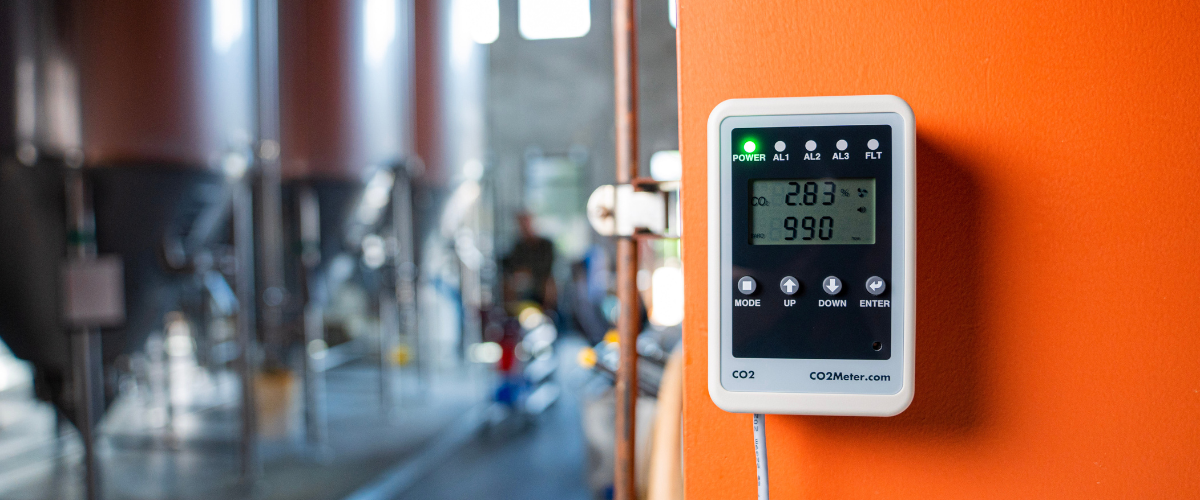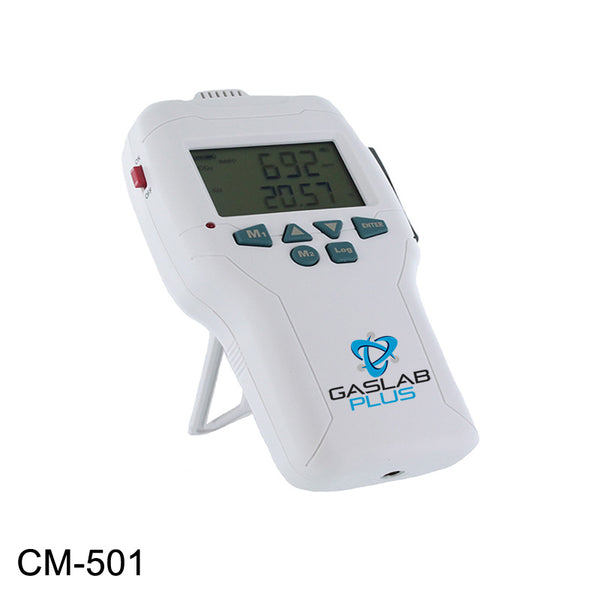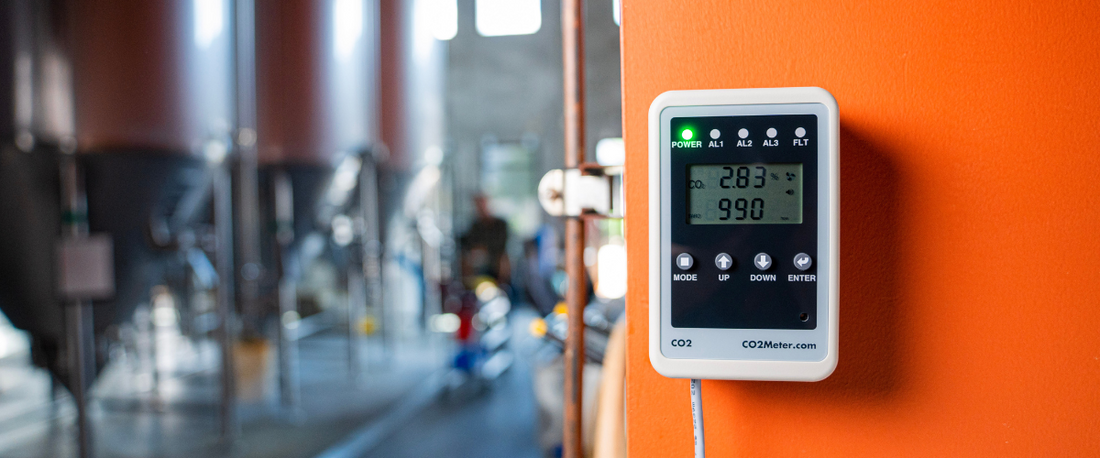
There are many types of gas detectors, each designed to detect one or more gases or operate in different environments. While each type differs in variation and design, they all work towards a common goal in monitoring and measuring gas concentrations for safety, analysis, or control.
Overall, gas detectors can be characterized most commonly by the gas sensors inside. Below we discuss the four main types of gas detectors by sensing technology: electrochemical, catalytic, infrared and photoionization sensors.
While these sensor types are just some of the primary categories, within each type there are variations and specialized designs to cater to specific applications and detection requirements.
Gas Sensors used in Gas Detectors
-
Catalytic Bead Sensors: These detectors are commonly used for detecting combustible gases. They operate by measuring the heat of combustion produced when the target gas comes into contact with a heated catalyst. The change in resistance of the bead due to the heat is measured to determine the gas concentration.
-
Infrared (IR) Gas Sensors: IR gas detectors are utilized for detecting various gases, including hydrocarbons and carbon dioxide. They work by measuring the absorption of infrared radiation by the target gas. Each gas has a unique infrared absorption spectrum, allowing the detector to identify and quantify its presence.
-
Electrochemical Sensors: These detectors are often employed for detecting toxic gases like carbon monoxide, hydrogen sulfide, and chlorine. They rely on chemical reactions between the target gas and an electrolyte solution to produce an electrical signal proportional to the gas concentration.
-
Photoionization Detectors (PID): PID detectors are used for detecting volatile organic compounds (VOCs) and other gases with ionization potentials below that of the air. They operate by ionizing gas molecules using ultraviolet (UV) light and then measuring the resulting electrical current.
These four types of gas detectors cover a wide range of applications and are commonly used in industrial settings, laboratories, environmental monitoring, and personal safety.
Advantages and Disadvantages of Various Gas Detector Types
Single Gas vs. Multi Gas Solutions
It’s essentially all in the name. Just as there are different types of gas detectors, there are also different categories. And like the name notes, Single gas detectors are monitoring one gas in particular — an multi-gas detectors monitoring multiple gases simultaneously.
Single gas detectors and multi-gas detectors also serve different purposes and cater to different needs dependent upon ones environmental requirements.
Below we take a look at some of the key differentiators between single vs. multi gas solutions:
Single Gas Detectors

- Single gas detectors are designed to detect one specific type of gas or vapor.
- They are often used for monitoring environments where the presence of a particular gas is expected or where there is a specific concern about a particular gas.
- Common applications include monitoring for toxic gases like carbon monoxide (CO), hydrogen sulfide (H2S), or oxygen deficiency in industrial settings, as well as for detecting combustible gases like methane (CH4) in confined spaces.
- Single gas detectors are typically simpler to operate and maintain, making them suitable for individual use or for monitoring single gas hazards in a specific area.
Multi-Gas Detectors
- Multi-gas detectors are capable of simultaneously detecting and monitoring multiple gases, like the MSC2 series which can monitor up from 1-3.
- They are used in environments where there may be a variety of potential gas hazards present, or where there is a need to monitor for a combination of gases.
- These detectors offer versatility and efficiency by consolidating the functionality of multiple single gas detectors into a single device.
- Multi-gas detectors are commonly used in industries such as oil and gas, chemical processing, firefighting, confined space entry, and emergency response, where workers may encounter various gas hazards.
- Some multi-gas detectors can detect up to four or five different gases simultaneously, providing comprehensive monitoring capabilities.
The choice between single and multi-gas detectors depends on several factors such as the nature of the work environment, the types of gases present, and the specific monitoring needs for the application.
What Can A Typical Multi Gas Detector Monitor?
A typical multi-gas detector is capable of monitoring a range of gases commonly found in industrial, commercial, and hazardous environments. The specific gases that a multi-gas detector can monitor may vary depending on the model and configuration, but here are some of the most common gases that they can typically detect:
-
Combustible Gases: Multi-gas detectors can detect various combustible gases and vapors, including:
- Methane (CH4)
- Propane (C3H8)
- Butane (C4H10)
- Hydrogen (H2)
- Acetylene (C2H2)
-
Toxic Gases: Multi-gas detectors are equipped to detect a range of toxic gases and vapors, such as:
- Carbon Monoxide (CO)
- Hydrogen Sulfide (H2S)
- Sulfur Dioxide (SO2)
- Ammonia (NH3)
- Chlorine (Cl2)
- Nitrogen Dioxide (NO2)
- Phosphine (PH3)
- Formaldehyde (CH2O)
- Hydrogen Cyanide (HCN)
- Chlorine Dioxide (ClO2)
- Ozone (O3)
-
Oxygen (O2): Multi-gas detectors also monitor oxygen levels in the environment to ensure that they remain within safe limits. They can detect oxygen deficiency (lower than normal oxygen levels).
-
Volatile Organic Compounds (VOCs): Some multi-gas detectors are equipped with photoionization detectors (PIDs) to detect volatile organic compounds.
-
Other Gases: Depending on the specific application and requirements, multi-gas detectors may also be able to detect additional gases such as:
- Carbon Dioxide (CO2)
- Methanol
- Ethanol
- Freon (refrigerants)
These are just some examples of the gases that a typical multi-gas handheld detector can monitor. The exact capabilities and sensor configurations may vary depending on the manufacturer and model of the detector. However, it's essential to select a multi-gas detector that is appropriate for the specific hazards and conditions present in the intended work environment.
Key Features of the Main Types of Gas Detectors
Selecting the right gas detector depends on several factors, including your specific needs, the environment in which it will be used, the types of gases you need to monitor, and many times even jurisdictional or regulatory requirements. Here are some steps to help you determine which gas detector is right for you:
- Identify the Hazards: Determine the types of gases or vapors present in your work environment or the specific hazards you need to monitor. Consider both toxic gases and combustible gases.
- Assess Environmental Conditions: Consider the environmental conditions in which the gas detector will be used. Factors such as temperature, humidity, and potential exposure to dust or water can influence the choice of detector.
- Regulatory Requirements: Check if there are any regulatory standards or guidelines that apply to your industry or work environment. Ensure that the gas detector you choose meets or exceeds these requirements.
- Number of Gases: Determine whether you need a single gas detector or a multi-gas detector based on the range of gases you need to monitor. If you need to monitor multiple gases simultaneously, a multi-gas detector would be more appropriate.
- Sensor Technology: Consider the sensor technology used in the detector. Different sensor technologies have different sensitivities, response times, and maintenance requirements. Choose sensors that are appropriate for the gases you need to detect. Click here to learn more about sensor technologies.
- Features and Functionality: Consider additional features and functionalities that may be important to you, such as data logging capabilities, alarms (audible, visual, vibrating), display options, calibration requirements, and battery life.
- Ease of Use and Maintenance: Choose a gas detector that is easy to use, calibrate, and maintain. Consider factors such as size, weight, ergonomics, and user interface.
By considering these factors and conducting thorough research, you can select the right gas detector that meets your requirements and helps ensure the safety of your work environment. If you're unsure, consulting with a safety professional or contacting a CO2Meter sales specialist can also be helpful.
How does a Gas Detector Work?
Gas detectors work by sensing the presence of specific gases in the surrounding environment. There are various types of gas detectors, but one common type is the nondispersive infrared (NDIR), which is often used for detecting hazardous gases like carbon dioxide (CO2). Here's a simplified explanation of how such detectors work based on their sensing principles:
-
Electrochemical Reaction: In an electrochemical gas sensor, there are electrodes immersed in an electrolyte solution. The electrodes are typically made of materials that react with the target gas. For instance, in a carbon monoxide detector, one electrode might be made of lead dioxide (PbO2) and the other of lead (Pb).
-
Gas Diffusion: The gas being detected diffuses into the sensor through a membrane. This membrane allows only the target gas to pass through, ensuring the specificity of the detection.
-
Chemical Reaction: When the target gas comes into contact with the electrodes, a chemical reaction occurs. In the case of carbon monoxide, it reacts with the lead dioxide electrode, producing lead ions and releasing electrons. This reaction causes a flow of electrons from one electrode to the other, generating an electrical current.
-
Nondispersive Infrared (NDIR): The NDIR sensors work by using an infrared (IR) lamp to direct waves of light through a tube filled with a sample of air. This air moves toward an optical filter in front of an IR light detector. The IR light detector measures the amount of IR light that passes through the optical filter.
Gas detectors may also use other sensing principles such as catalytic combustion, or semiconductor gas sensing, depending on the type of gas being detected and the application requirements. Each sensing principle has its advantages and limitations in terms of sensitivity, selectivity, response time, and cost.
Recognizing and Preventing Gas Hazards
Overall, although many gases and vapors are invisible to our eyes, they still pose a significant hazard to employee health and workplace safety. The presence of dangerous gases and vapors creates the potential for injury, explosions, and even fatalities. Additionally, inhaling toxic materials can severely damage an employee’s lungs, kidneys, and other parts of their body. Although these workplace accidents are all different, they share the commonality that they’re easily avoidable with the right preventative safety measures in place.
By implementing and installing gas detection safety alarms, these devices can be instrumental in creating a safe work environment and ensuring compliance with regulatory standards.
Future Trends in Gas Detection Technology
Future trends in gas detection technology are shaping the way industries approach safety and efficiency. One of the most significant developments is the integration of IoT (Internet of Things) with gas detectors, allowing for real-time data collection and remote monitoring.
This connectivity enables predictive maintenance, where potential issues can be identified and addressed before they lead to dangerous situations or costly downtime. IoT-enabled gas detectors also provide enhanced data analytics, offering deeper insights into gas exposure patterns and helping to improve overall safety protocols. For those customers looking for IoT enabled gas detection safety systems, the MSC2 series provides this capability and ensures safety in the field.
For more information on gas detection and to better assist you in choosing the right gas detector, one of our gas detection experts would be happy to walk through some common questions to better select the right device that fits your individual needs and environmental requirements.
Fill out our contact form here or email an expert at Sales@CO2Meter.com







